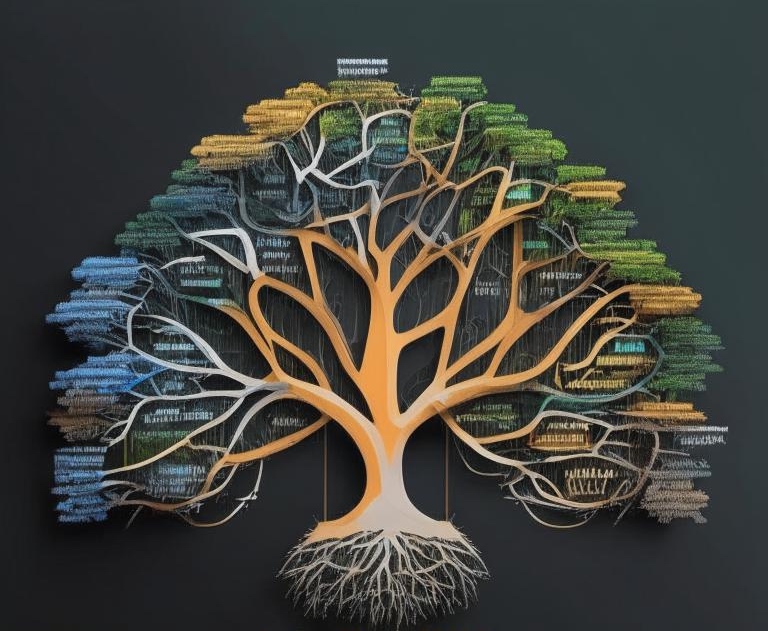Umwelt
by Oleg Sovetnik
The missing semantic link (mindmap) can be understood through the concept of umwelt — a subjective world unique to each biological being, shaped by its perceptions and actions. This term, borrowed from biosemiotics — the science that studies the properties of signs and sign systems (sign processes) in living systems — was introduced by Jakob von Uexküll and developed by Thomas Sebeok. Umwelt describes how each living being perceives and interacts with its environment based on its sensory and cognitive characteristics. In the context of programming, the concept of umwelt can be used to describe how developers and systems interpret and structure the subject area.
It can also be said that umwelt consists of signs that an animal receives through its sensory organs and interprets. It is formed by two spheres, shaped by sensory organs and organs of action from the surrounding reality — the perceptual world and the operational world. Synonyms for the term “umwelt” include behavioral space of life and meaningful environment.
The mindmap, proposed by Tony Buzan, is ideally suited for expressing the structure of umwelt. It is designed as a tool for reflecting structured thoughts and ideas, allowing complex relationships between concepts to be visually represented. This enables all team participants, regardless of their technical background, to understand the structure and meaning of the project. This approach addresses the “elephant description” problem before it arises, providing a coherent and clear representation of the subject area.
Why is the mindmap suitable for umwelt?
- Tree Structure: Like code organized into files and modules, a mindmap has a tree structure that represents a hierarchy of concepts. This similarity makes it a natural choice for expressing the connections between concepts in the subject area and their implementation in software.
- Human-Size Dimensions: According to Tony Buzan, a person can effectively hold 5-7 objects in their mind simultaneously. A mindmap, by breaking down complex information into nodes and branches, makes it more accessible for the brain, helping to better comprehend the structure and meanings of the project.
- Visual Clarity and Simplicity: Mindmaps use keywords and associations, making them understandable to all team participants. This addresses the “Tower of Babel” problem by creating a common language and ensuring cognitive transparency in the project.
- Focus on Semantic Connections: A mindmap helps to identify and organize key meanings and their connections, making it a powerful tool for expressing umwelt. Just as umwelt is formed based on perception and action, a mindmap is built upon the relationships between concepts.
Tony Buzan argued that mindmaps help the brain better organize and remember information because they mimic the natural process of thinking and perceiving the world. This is what makes them such an effective tool for modeling umwelt in software design.
Thus, for successful development, we need a structure that not only organizes code but also ensures clarity and consistency of meaning. This structure should be built on a common language that unites all project participants around a shared understanding of the subject area. We just need to find the tools for exploring and modeling this domain.
umwelt mindmap language conceptualization
